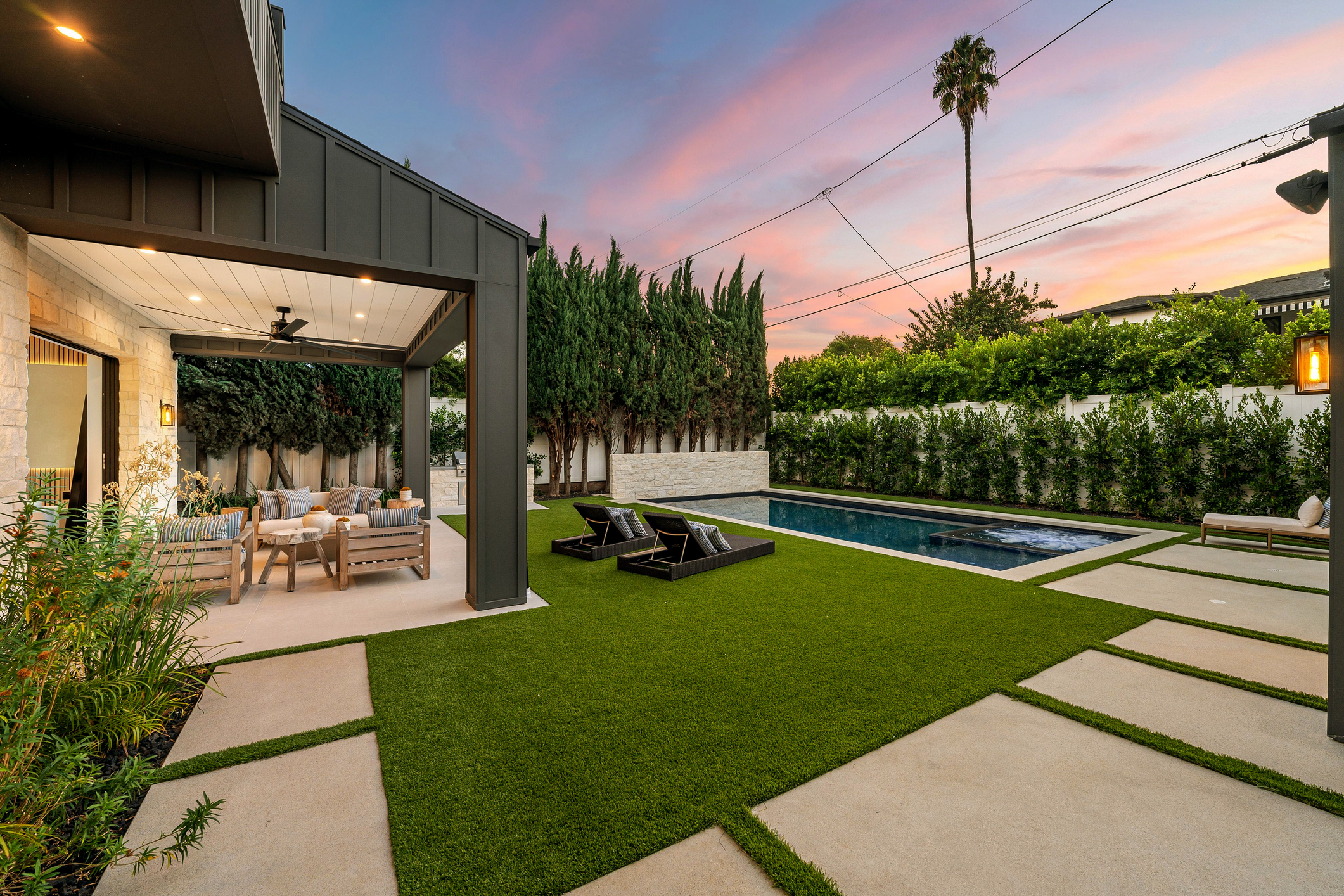A great garden isn’t just beautiful for one part of the year—it should thrive and evolve with the seasons. Whether it’s a vibrant spring display, rich autumn tones, or the quiet structure of a winter garden, designing a landscape that looks good year-round is a smart, sustainable approach that also reduces ongoing maintenance.
At Luma Landscapes, we believe seasonal garden design should be both practical and inspiring. By choosing the right mix of plants and structure, you can create a garden that stays lively, interesting, and easy to manage in any weather. Here are five expert strategies to help you design a garden that looks stunning in every season.
1. Start with Evergreen Structure for Year-Round Impact
The secret to a garden that holds its shape and interest through all seasons is a strong evergreen framework. Evergreens maintain their foliage year-round, giving your landscape form and greenery even when other plants are dormant.
To build your evergreen base:
- Choose a variety of evergreen shrubs, ground covers, and trees to create layered structure
- Select native evergreen plants, which are naturally better suited to Australian climates
- Incorporate low-maintenance varieties that don’t require frequent pruning or watering
- Combine different leaf shapes and tones of green for depth and variety
- Use evergreens to frame beds, pathways, or divide garden zones for year-round function
This foundation ensures your garden never feels empty—even in the middle of winter.
2. Layer in Perennials for Seasonal Colour and Movement
Perennials are the lifeblood of a seasonal garden. These plants come back year after year, often blooming at different times depending on the species. With careful selection, you can enjoy waves of colour that shift and blend throughout the year.
Designing with perennials:
- Mix perennial plants that flower in different seasons to create rolling blooms
- Plant bulbs such as daffodils and tulips in autumn for spring impact
- Choose flowering perennials like salvias, kangaroo paw, or echinacea for lasting appeal
- Include drought-tolerant varieties that suit your region’s rainfall patterns
- Position perennials around evergreen plants to maintain structure between blooms
Perennials add rhythm and change to your garden, helping it feel alive and dynamic.
3. Design with Winter Interest in Mind
Winter is often overlooked in garden design, but it’s a great opportunity to showcase structure, texture, and subtle colour. Rather than seeing winter as a gardening ‘off season’, design for it from the start.
To keep your garden attractive in winter:
- Use winter flowers like hellebores, camellias, and grevillea for seasonal colour
- Add permanent elements like stone paths, seating, and trellises for structure
- Feature evergreen climbers or topiary for vertical interest
- Use mulch to protect roots and improve soil health during cooler months
- Include fire pits or sheltered seating to make the garden inviting in cold weather
A winter garden doesn’t have to be bare. With the right plants and features, it can be one of the most peaceful and striking parts of your landscape.
4. Embrace Seasonal Rotations and Edible Swaps
A key part of designing a garden that evolves throughout the year is planning for plant rotation. This keeps the space feeling fresh while allowing you to enjoy seasonal vegetables, herbs, or decorative annuals.
Ways to make seasonal rotation easy:
- Use containers and raised garden beds for fast plant swaps between seasons
- Grow colourful annuals in spring and summer, then switch to edible crops in cooler months
- Integrate leafy greens and herbs with ornamental plants for a functional and beautiful mix
- Highlight seasonal foliage like deciduous shrubs that change colour in autumn
- Keep a garden calendar to track planting times and maintenance
This flexible approach allows your garden to stay productive and visually interesting without requiring major rework.
5. Choose Low-Maintenance, Climate-Friendly Plants
Creating a seasonal garden doesn’t mean you need to spend every weekend in it. With smart plant selection and thoughtful design, your garden can look great and take care of itself.
To reduce maintenance:
- Prioritise native plants, which are naturally suited to Australian conditions
- Look for drought-tolerant options that require less watering
- Use ground covers and mulch to suppress weeds and retain soil moisture
- Include self-seeding plants that return each year with minimal effort
- Consider installing an automated irrigation system for consistent watering without the hassle
Sustainable garden design isn’t just good for the environment—it also saves time and money over the long run.
Conclusion
Designing a garden that changes with the seasons is about more than just planting pretty flowers—it’s about creating a space that evolves with nature, offers year-round interest, and remains easy to maintain.
By combining evergreen structure, carefully selected perennials, winter-focused design, seasonal planting rotation, and low-maintenance species, you can enjoy a garden that feels fresh and welcoming no matter the time of year.
Contact us today to schedule your consultation, or view our range of projects to see how we can transform your landscape. Let’s work together to transform your garden into a beautiful, functional outdoor sanctuary.




